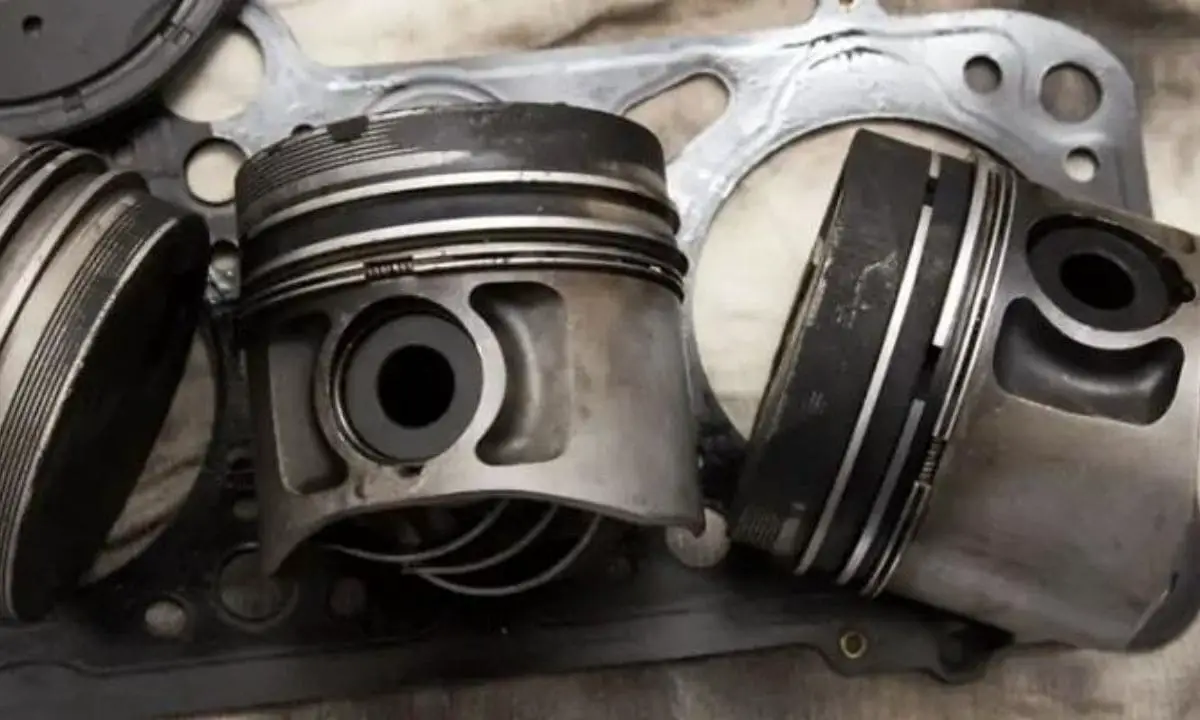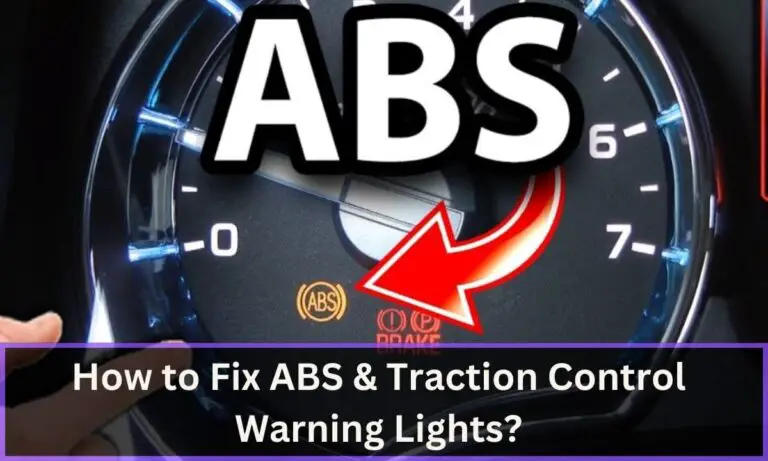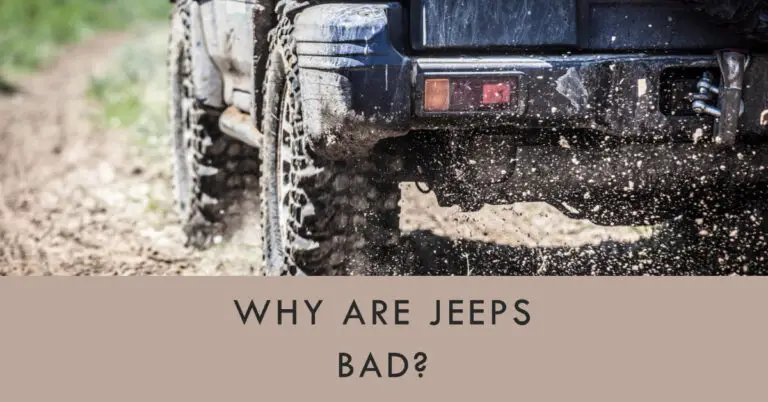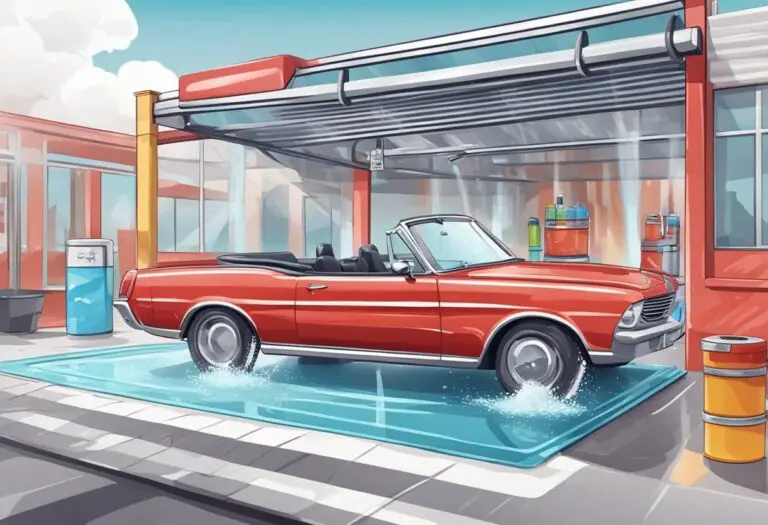How Long Can You Drive With Bad Piston Rings? Symptoms, Damage Risks, and Repair Tips

Have you noticed some strange sounds coming from your engine lately? Seen some unusual smoke from the exhaust? Does your car seem to be burning more oil than usual? These could all be signs of worn piston rings, a problem that won’t go away on its own. But how long can you safely keep driving if you suspect issues with your piston rings? Let’s take a closer look at what bad piston rings can do to your engine, how to know if your piston rings are bad, and how urgently you need to look into replacing piston rings.
Table of Contents
What Are Piston Rings and What Do They Do?
Piston rings are metal rings that fit into grooves on a piston and seal the gap between the piston and cylinder wall. There are usually three rings per piston:
- The top two are compression rings that prevent combustion gases from escaping into the crankcase.
- The bottom ring is the oil control ring, which scrapes away excess oil and returns it to the sump.
Piston rings serve several crucial functions:
- They seal the combustion chamber and maintain cylinder pressure and engine compression. Compressed gases provide the force to move the piston.
- They help regulate engine oil consumption by limiting how much oil travels into the combustion chamber.
- They disperse heat from the piston to the cylinder wall.
- They prevent engine oil from being burned and exiting through the exhaust.
Simply put, piston rings are what allow your engine to produce power while keeping oil and combustion byproducts contained. When they fail, the consequences can range from decreased performance to extensive engine damage.
How Do I Know If My Piston Rings Are Worn Out?
There are several key symptoms that can indicate your piston rings are worn and allowing blowby in the cylinders:
- Loss of engine power – As ring seal declines, compression drops and reduces engine power. Acceleration may lack punch.
- Increased oil consumption – Bad seals allow oil past the rings into the combustion chamber, causing excess oil burn.
- Blue or gray exhaust smoke – Oil getting past the rings burns in the cylinder, producing telltale smoke from the tailpipe.
- Oil leakage – Compression loss can push crankcase oil past the rings into the cylinders.
- Engine knocking or tapping sounds – As compression drops, detonation and abnormal combustion can produce knocks.
Monitor your vehicle for these key symptoms of bad piston rings and be prepared to take action. The longer you drive with failing piston rings, the greater the risk of additional engine damage.
What Are the Dangers of Driving With Bad Piston Rings?
Worn piston rings can start a cascading effect of problems that can ultimately destroy an engine. Here are some of the biggest risks:
- Oil burning – Excess oil entering the cylinders will burn and produce smoke, while also coating spark plugs and valves. This can lead to misfires, poor performance, and engine overheating.
- Loss of compression – As the seal declines, cylinder pressure drops. This decreases power output. Driving with worn piston rings means accepting weaker engine performance.
- Engine damage – Piston blowby erodes cylinder walls and dilutes engine oil. Contaminants in the oil can damage bearings and other components.
The longer you operate an engine with bad piston rings, the greater the damage can be. It’s not something that will fix itself, so prompt action is required.
How Long Can I Safely Drive With Worn Piston Rings?
There’s no straightforward answer for exactly how many miles you can drive once your piston rings start to fail. It depends on:
- The extent of the wear – Minor leakage versus completely blown rings
- Engine oil level and quality – More oil helps compensate for blowby
- Your risk tolerance – Are you willing to risk major repairs?
Blowby damage is cumulative, so there’s no firm cutoff where it suddenly becomes unsafe. In general, you should minimize driving and have piston rings evaluated and replaced as soon as symptoms appear. Continuing to drive with damaged rings only risks worsening the problems.
Pay attention for the signs of worn piston rings described above. Once you notice multiple symptoms, make repair arrangements promptly. The sooner you can have new rings installed, the better.
What Causes Piston Rings to Fail Prematurely?
There are a few key causes of abnormally fast piston ring wear and failure:
- High mileage – Rings lose elasticity and the seal declines after many miles of service. Even with the best maintenance, they’ll eventually wear out.
- Overheating – Sustained high temperatures in the combustion chamber can warp rings and cause them to lose proper fit and tension.
- Detonation/pre-ignition – Abnormal combustion events generate excessive pressure spikes that can damage rings.
- Improper installation – Rings must be carefully installed during engine rebuilds to avoid gaps and loss of tension.
- Debris ingestion – Contaminants like dust or dirt entering the engine can rapidly erode the rings and cylinder walls.
While rings are wear items intended to be replaced over time, attending to issues like overheating and ingestion of debris can maximize the lifespan of each set of new piston rings.
When Do I Need to Replace the Piston Rings?
Ideally, piston rings should be replaced when:
- You start noticing symptoms of worn rings – Don’t wait for complete failure once issues arise. Address them promptly.
- Rebuilding a worn engine – A full rebuild is the perfect time to install fresh rings. They should always be replaced in sets.
- After combustion blowby events – Detonation or pre-ignition can damage rings even at low miles.
- At manufacturer’s recommended intervals – Some engines specify periodic ring replacement.
Waiting too long risks ring failure at an inconvenient time. Plus, driving with worn rings allows additional damage to occur. Be proactive and don’t delay once you suspect bad piston rings.
What is Involved in Replacing Piston Rings?
Replacing piston rings is typically performed when rebuilding an engine. The process involves:
- Disassembling the engine and removing pistons for access. The cylinder head must come off.
- Measuring cylinder walls for damage or wear. The cylinders may need boring and honing.
- Decompressing rings and removing them from piston grooves. Breaking rings can damage pistons.
- Checking ring end gaps against manufacturer specifications. Gaps are filed to achieve proper clearance.
- Installing new compressor and oil control rings in the proper sequence and orientation. Ring gaps must be staggered.
- Reassembling engine with pistons and new rings. Proper ring alignment and stagger is critical.
The process requires expertise and specialty tools. While technically possible as a DIY job, piston ring replacement is extremely challenging and not recommended for amateur mechanics. The risks of improper installation are high.
Can I Drive With Bad Piston Rings Until I Can Afford to Fix Them?
It’s never recommended continuing to drive once worn piston rings have been diagnosed. Each additional mile risks the following:
- Further engine damage – Continued blowby accelerates cylinder, piston, and bearing wear.
- More expensive repairs – Driving with damaged components can lead to other engine parts needing replacement as well.
- Breaking down away from home – The worse the rings, the higher the chances of a roadside breakdown.
- Safety risks – Loss of power could put you in a hazardous situation when trying to accelerate or pass.
As costly as an engine rebuild or piston ring replacement might be, it pales in comparison to the expenses and headaches incurred by a catastrophic engine failure. Address worn rings immediately.
Do I Have to Replace All the Piston Rings at Once?
It’s strongly advised to always replace all piston rings at the same time, even if only one seems faulty. Here’s why:
- Rings work collectively to seal the combustion chamber. A single weak ring compromises the system.
- The new ring paired with older ones will likely wear unevenly.
- Mixing worn and new risks improper sealing and blowby.
- Labor is the bulk of the cost. Doing all at once doesn’t cost much more.
Think of rings as a “set” – they work best when uniformly worn and tensioned. Replace them all simultaneously for optimal performance and longevity.
How Much Does it Cost to Replace Bad Piston Rings?
The cost to replace worn piston rings can vary significantly. While you might expect to pay anywhere from $500 to $1000 or more for parts and labor, the actual cost can be much higher depending on several factors:
Engine Size and Number of Cylinders
The size of the engine and the number of cylinders can affect the cost. More pistons mean more rings and more work.
Labor Rates
The labor rates at the shop performing the work can significantly impact the total cost. With labor rates potentially reaching up to $250 per hour, this can quickly add up.
Additional Repairs
If additional repairs are needed, such as machining worn cylinders for proper sealing, this will also add to the cost.
Parts Quality
The quality of the parts used can also affect the price. Premium rings tailored to your engine may cost more but could last longer.
Full Rebuild
If a full rebuild is required due to excessive damage from failed rings, costs can quickly multiply. The total cost for a full engine rebuild and piston ring replacement could range from $3,000 to $6,000 or even higher if your engine is harder for the mechanic to access.
A local shop can provide an accurate quote based on your specific engine’s needs.
When Should I Seek a Professional Mechanic for Bad Rings?
It’s wise to involve a professional mechanic trained in engine work if:
- The root cause of symptoms isn’t clear – An expert can diagnose if bad rings are definitely the issue.
- Major disassembly and machining will be required – They have the skills, tools and equipment to properly rebuild engines.
- Specialty tools are needed – Proper ring installation tools help prevent damage and need for re-repair.
- Warranty coverage depends on it – Manufacturer may require certified mechanic for warranty rebuild.
- You lack time or ability – Engine jobs can be time consuming and challenging for novice mechanics.
Diagnosing and correcting an issue like worn piston rings requires know-how most DIYers lack. The risks are high for improperly installing the fresh rings. Seek professional assistance when piston ring replacement is needed.
Can I Replace Piston Rings Myself?
Technically it’s possible to tackle piston ring replacement as a DIY project if you have automotive experience, but it’s generally not advisable for a few key reasons:
- Engine teardown and removal is required – Major disassembly work with complex procedures.
- Special tools and machining needed – Proper ring installation and fitting tools, cylinder honing equipment, etc.
- Precise ring orientation critical – Improper stagger or gaps can cause serious issues.
- High risk of assembly errors – A mistaken step can lead to early failure or major repairs.
Unless you have advanced mechanical skills and engine rebuild experience, it’s wise to leave ring replacement to a professional shop. Paying an expert for a quality job is worthwhile, as mistakes during DIY attempts often end up costing more in the long run.
How Can I Prevent Premature Piston Ring Failure?
You can maximize the lifespan of your piston rings through:
- Regular oil changes using quality engine oil – Maintain clean lubrication.
- Following maintenance schedule – Don’t overlook timing belt, coolant, transmission, etc. services.
- Avoiding over-revving or lugging engine – Prevent detonation and unnecessary heat.
- Watching for overheating warning signs – Address cooling issues immediately.
- Using good quality gas and engine oils – Follow manufacturer fuel recommendations.
- Performing tune-ups and other ignition services – Helps prevent pre-ignition and detonation events.
- Changing air and oil filters regularly – Reduces contaminants that can damage rings.
- Fixing drivetrain issues promptly – Helps prevent particles from entering engine.
Proactive maintenance and responsible driving habits significantly extend how long each set of piston rings will last.
Am I Better Off Rebuilding the Whole Engine?
If your piston rings have worn to the point of needing replacement, chances are good that the pistons, cylinders, bearings and other internal components are worn as well. In this case, a full engine rebuild is advisable for several reasons:
- It addresses all worn parts at once – Rings alone won’t restore performance fully.
- The labor cost for rebuild isn’t much higher – Much of the work overlaps.
- Mixing old and new parts risks mismatched wear rates.
- Availability of matching oversize rings and pistons.
- Overall better return on investment – A rebuild brings back like-new performance.
Don’t just default to the cheapest band-aid fix when faced with blown piston rings. In most cases, a full professional rebuild using new piston rings and complementary parts yields the best long-term results.
How Long Will New Piston Rings Last?
When properly engineered and installed, a new set of piston rings should deliver:
- At least 100,000 miles of service life, often much more.
- 5-10 years under normal driving conditions before requiring replacement.
However, realizing this longevity depends on:
- Proper sizing for your specific engine and cylinders.
- Precise installation and orientation per manufacturer instructions.
- High quality rings designed for durability and minimal friction.
- Avoiding detonation events and excessive heat.
- Regular maintenance and oil changes.
With the right parts and process, fresh rings will seal and protect your cylinders for tens of thousands of miles. But cut any corners during installation or maintenance, and premature failure looms.
Key Takeaways on Driving With Bad Piston Rings
Worn piston rings signal a serious issue that won’t fix itself and needs prompt professional attention. Here are the key points to remember:
- Stop driving once symptoms are noticed – Further mileage only increases risks.
- Seek diagnosis by an experienced mechanic – Confirm root cause before proceeding.
- Replace all rings as a complete set – Mixing old and new compromises function.
- Have machine work done as needed – Cylinders must be properly prepared for new rings.
- Follow precision installation procedures – Proper ring gaps, stagger, and orientation are critical.
- Perform a full rebuild if warranted – Address all worn parts, not just the rings.
- Practice preventive maintenance – Extend ring life through responsible driving and upkeep.
Identifying and addressing bad piston rings quickly limits additional engine damage. With the right diagnosis and repair by professionals, your engine can deliver many more miles of reliable service.
Conclusion
Worn piston rings are a serious issue that will continue degrading engine performance and longevity the longer they are allowed to operate. Once symptoms appear like reduced power, oil burning, or blue exhaust smoke, minimize driving and have your vehicle serviced immediately. Technicians can confirm piston ring wear and recommend the proper repairs.
Replacing damaged piston rings requires major engine disassembly and precise installation for success. While technically possible as a DIY project, the risks are high without proper training and specialty tools. The labor costs for a professional to replace the rings during a full rebuild are typically not much higher than just swapping the rings.
Addressing worn piston rings promptly reduces the chances of additional engine damage needing more expensive repairs down the road. With quality parts and skilled installation, fresh rings should deliver many more miles of reliable service. But allowing damaged rings to continue deteriorating puts your engine at risk of outright failure. Heed the warning signs and take action before it’s too late.







